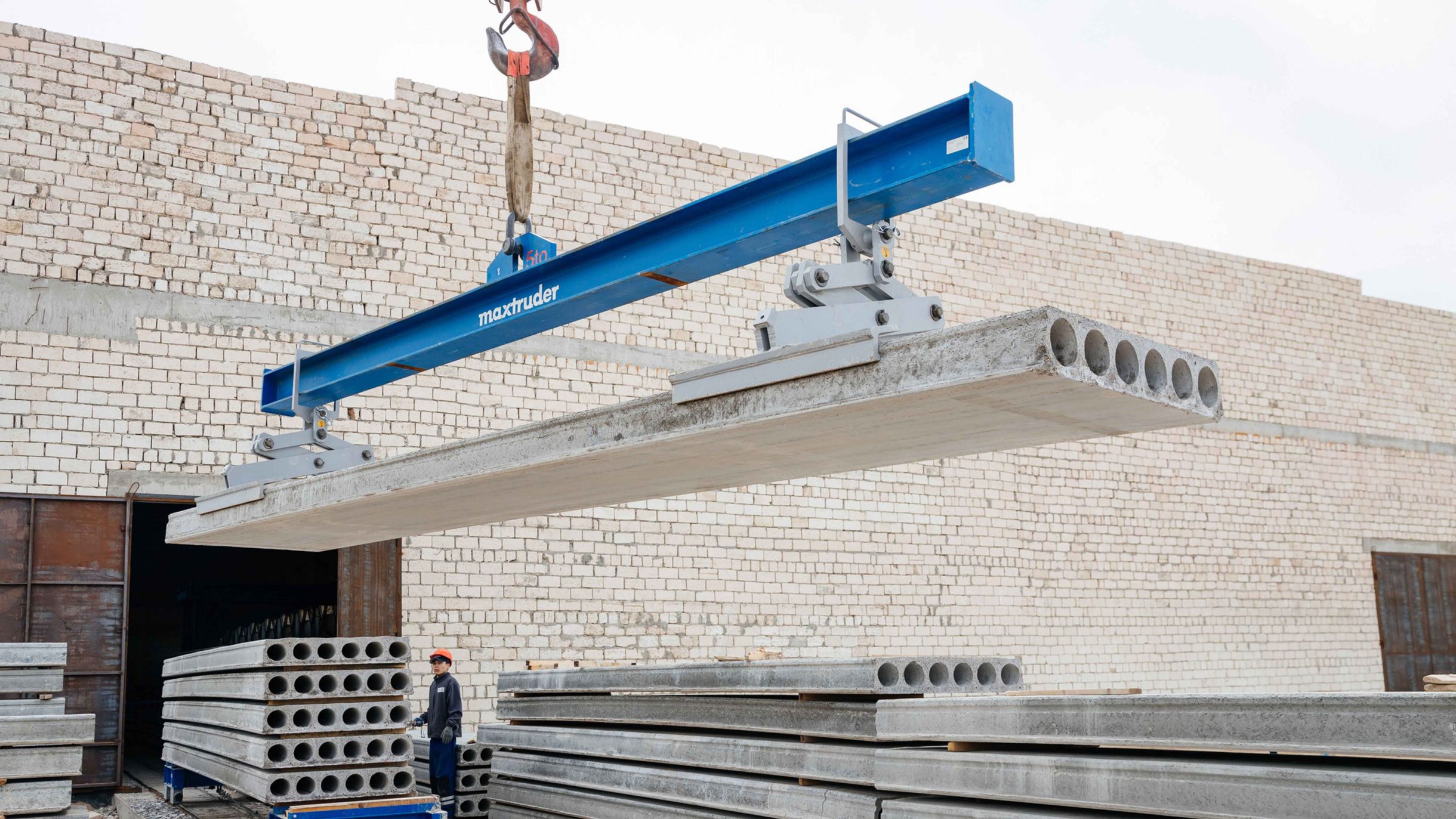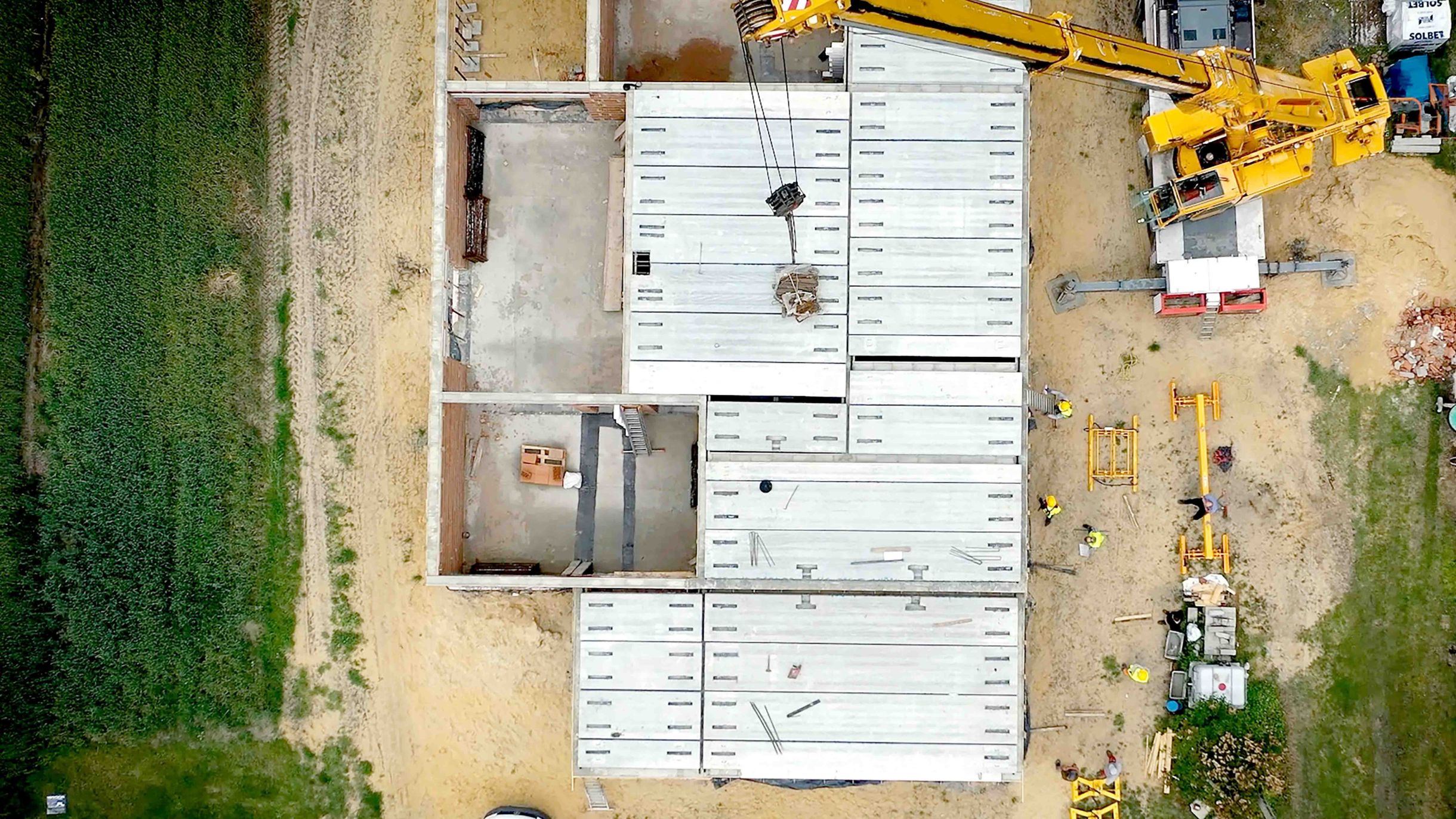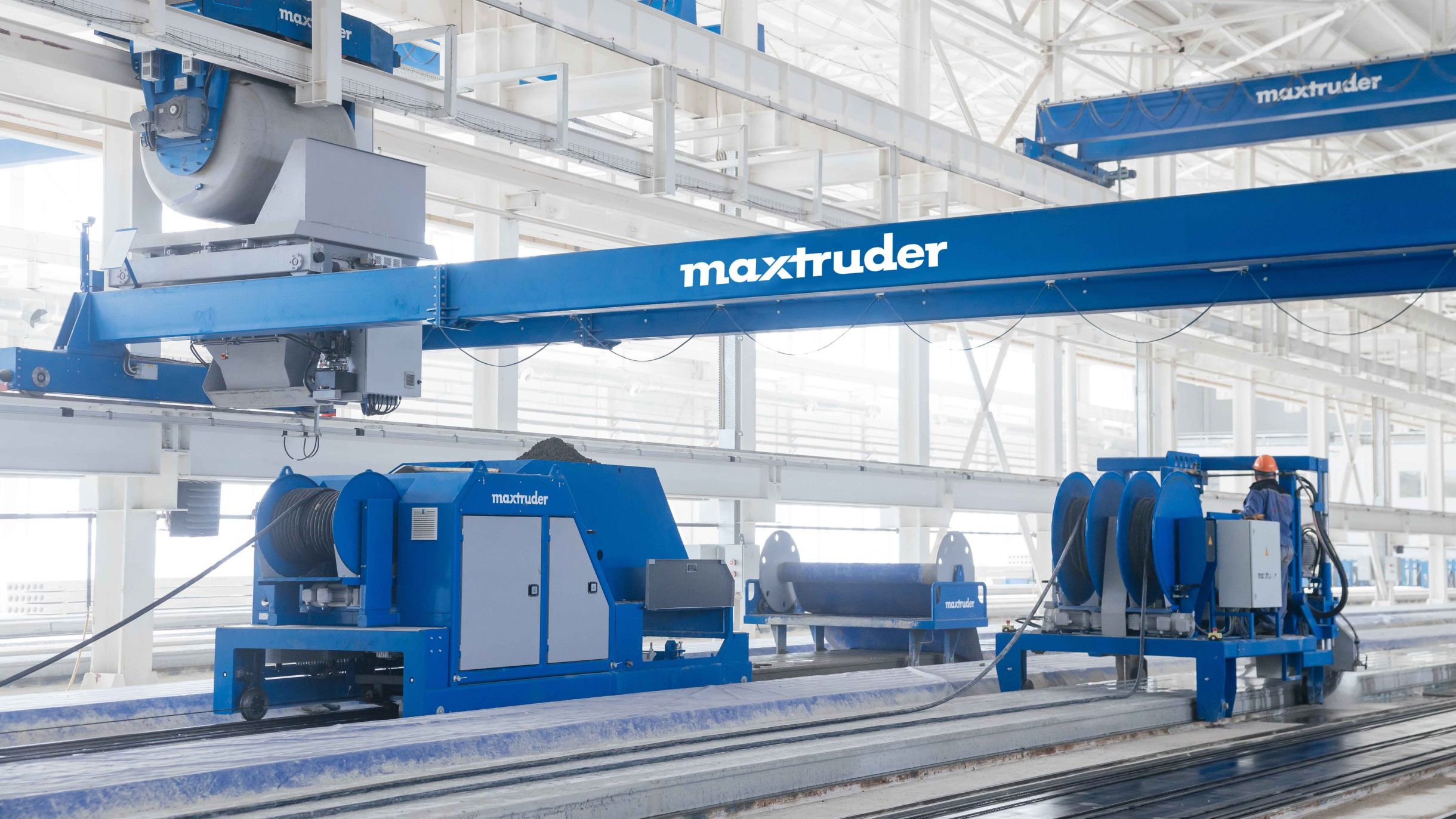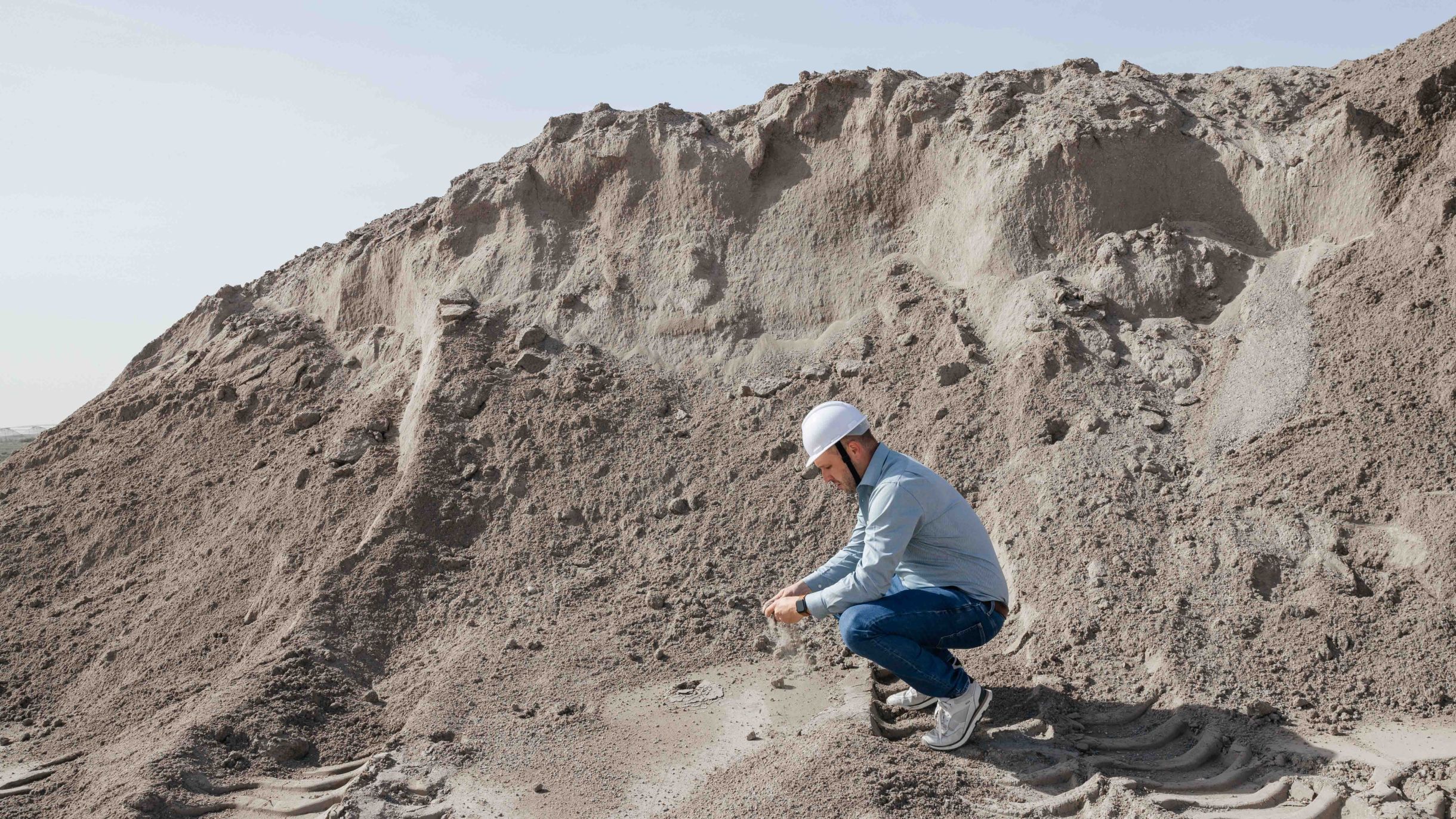Prestressed concrete precast elements Build resource-efficient with maximum load capacity
Why prestressed concrete is a game changer
In today’s construction industry, one of the greatest opportunities for reducing resource consumption lies in the structural components themselves. While insulation and smart building systems are important, resource-efficient construction starts with the materials we use – and prestressed concrete is leading the way.
By using tensioned steel cables or strands embedded in the concrete, prestressed concrete fully harnesses the mechanical advantages of the material — all while using significantly less of it. It delivers higher strength, longer spans and lighter elements that are easier to transport and assemble.
At the forefront of this transformation is MAX-truder, delivering advanced extruder technology that allows manufacturers to produce prestressed concrete precast elements precisely, economically and with minimal environmental impact.

What makes prestressed concrete precast elements so special
Prestressed concrete — also known as pre-tensioned concrete — is based on a clever engineering principle: steel tendons are tensioned within the form before the concrete is poured. Once cured and the tension is released, the concrete remains under constant compression. This internal stress increases resistance to external loads and minimizes tensile stresses, which are the primary cause of cracking in traditional concrete.
The ability to apply prestressing in a controlled industrial environment results in optimised use of materials. Engineers can design slimmer sections without compromising structural integrity. This translates into significant savings on cement, aggregates and steel.
This targeted prestressing:
reduces cracking
increases load-bearing capacity
enables longer spans with lower self-weight
These performance improvements bring efficiency not only to the production process but also to the job site: transportation becomes more cost-effective, lifting equipment can be downsized and assembly processes are faster and safer.
The combination of resource efficiency, long-term durability and load-bearing capacity makes prestressed concrete elements the ideal choice for sustainable and economically sound construction projects.

How MAX-truder puts the advantages of prestressed concrete into practice
To fully realise the benefits of prestressed concrete, industrial precision is essential. MAX-truder offers tailored production lines for the manufacture of prestressed concrete elements — especially for hollowcore slabs and beams that require high prestressing capacity with reduced material use.
The extruder systems apply the concrete continuously and with high precision onto the production beds. The process is automated, digitally controlled and nearly waste-free. Prestressing systems are integrated directly into the process — eliminating the need for rework on the construction site.
This approach results in high-performance prestressed concrete precast elements, which prove particularly effective in residential construction, industrial halls, infrastructure projects and large-scale floor and roofing systems. With maximum production accuracy and resource-saving processes, prestressed concrete becomes a core component of sustainable building.
Typical applications using MAX-truder solutions:

Resource efficiency at every stage
Prestressed concrete delivers measurable benefits — both in theory and in practice — throughout the entire lifecycle. Unlike conventional concrete components, prestressed elements can be dimensioned with pinpoint accuracy. This lowers material usage and reduces the environmental footprint from the production phase onward.
Even on the construction site, prestressed concrete offers clear advantages: lighter weight, easier assembly, fewer deliveries. Construction time is shortened, equipment and energy use are reduced and CO₂ emissions fall significantly.
The resistance of prestressed concrete elements to cracking, moisture and heavy loads also reduces long-term maintenance. In this context, sustainable construction means saving resources and building for longevity at the same time.

Who benefits from prestressed concrete precast elements
Prestressed concrete offers benefits for all stakeholders:
- Planners and architects gain greater design flexibility through longer spans and slimmer elements.
- Developers and investors benefit from stable asset values, lower operating costs and improved environmental performance.
- Precast factories gain higher resource efficiency, automation and production reliability with MAX-truder technology.
The bottom line: prestressed concrete is not a trend – it is the future of building
Prestressed concrete precast elements are a forward-looking response to challenges like climate protection, raw material scarcity and rising construction costs. They combine structural strength, resource efficiency and cost-effectiveness — and become an industrial success story through MAX-truder’s technology.
If you want to build sustainably and smartly, prestressed concrete is the solution you have been looking for.

